|
|
|
shale and bluestone column
Thursday, October 14 2010
A period of cold and rain had been predicted, and that forecast, combined with a welcomed slackening-off in the supply of web work, finally compelled me to begin scavenging firewood for the season. As I have in past seasons, this winter I'll be relying on something of a just-in-time wood gathering regime. Our woodshed is big, but it cannot store a whole season's worth of wood, and we're beginning this particular season with it only about ten percent full (or perhaps 20% as full as I've ever made it, though neither of these figures include the annex sticking out the back, which is the size of a pickup truck bed and has been completely full since mid-October of last year). In order to, as I do, burn your firewood within weeks of gathering it, you have to either cut up dead hardwoods or accelerate the drying of any green firewood you hope to burn. I do both, trying to do as much of the former and as little of the latter as available tree harvest opportunities allow.
Today I ventured down the Stick Trail with my temperamental Stihl Farm Boss chain saw. Just beyond the crossing the Chamomile, I went down along its rocky banks a hundred feet or so and wrestled a long-dead tree (either Chestnut or Oak) off a rocky cliff so that it wouldn't fall on me as I cut it up. There are a string of low shale-and-bluestone cliffs along this particular contour line (circa 580 feet above sea level) wrapping all the way around "Hurley Mountain," and this was the first time I'd looked closely at this particular cliff. It was covered in a lush blanket of green moss that dripped with surface runoff from recent rains. Parts of the cliff face had eroded back, leaving a shallow, blocky cave (resembling a stack of legos with a few blocks missing). And a cave wasn't the only interesting geological feature in the cliff face; there was also a column of stacked shale and bluestone helping to support the front of its ceiling.
Temperatures weren't even quite in the 60s, but all this activity soon drenched me in sweat and I had to peel off my two shirts (a teeshirt and a grey long-armed pajama top that has become part of my autumnal uniform, both at home and in public). I ended up spending the next several hours shirtless as I carried the firewood to various staging areas and then loaded and wheeled home a cartful.
These "staging areas" are places along the Stick Trail that I can reach by wood cart. Initially the most convenient such staging area seemed to be back up the Chamomile to where the Stick Trail crossed it. But then I realized that the slope of the hill just north of this set of cliffs could be climbed owing to an ancient fallen tree that had collected dirt into something of a ramp. This led to a place along the Stick Trail over a hundred feet closer to the house than the Chamomile crossing. All I needed to do was improve the climbability of the slope by installing a series of bluestone steps. Installing the steps was a messy imprecise job, particularly since I'd brought no suitable tools. But I was able to get some steps into a few strategic places that allowed me to carry nearly all of the wood from the tree up to the Stick Trail. Later I came back with a maddock and installed more steps and replaced the crappier initial ones. I've mentioned before that steps are improved via a Darwinian process; the least-stable ones are gradually replaced with better ones until the entire staircase becomes reasonably usable.
At some point as I was installing the steps late this afternoon, a cold rain began falling on my bare back and it felt kind of good.
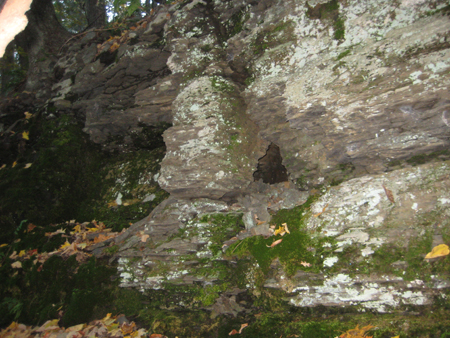
The shale and slate column in the cliff, looking southwest.
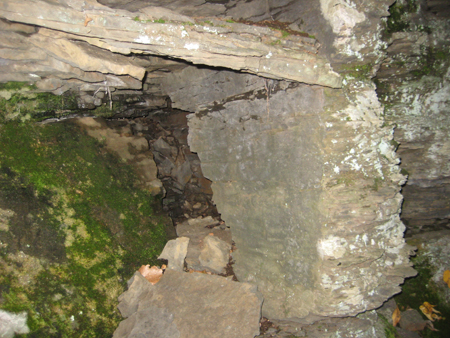
The shale and slate column in the cliff (detail).
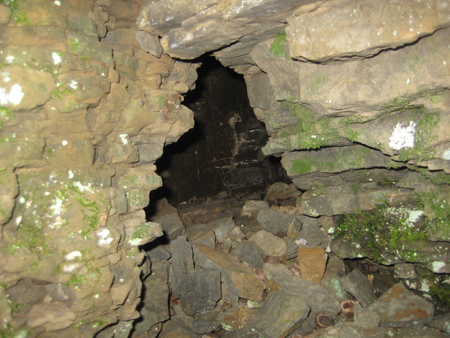
The cave behind the column.
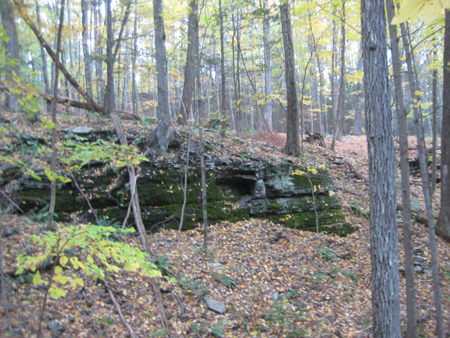
The cliffs, looking northwest from across the Chamomile.
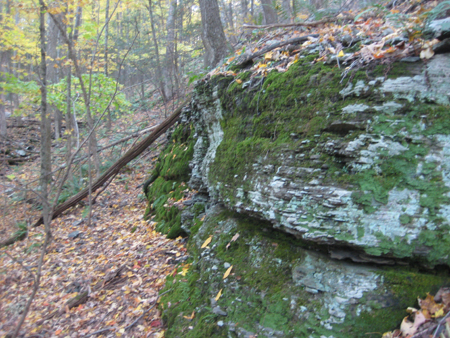
The cliffs, looking southwest. That one tree you can see leaning against the cliffs is similar to (though smaller than) the one I cut up today.
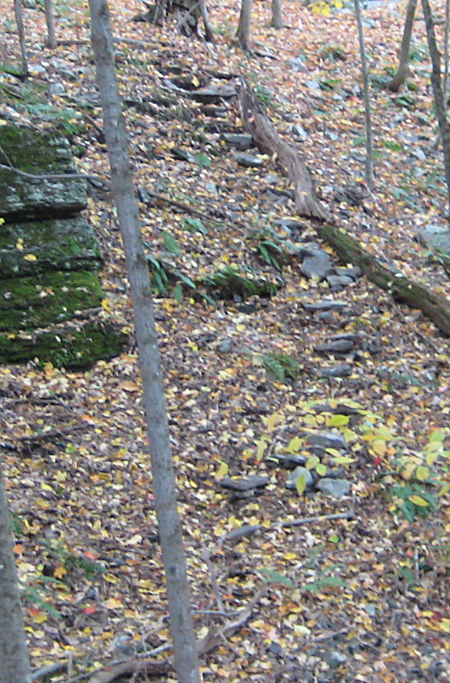
You can make out the line of steps going along the north end of the cliff here.
For linking purposes this article's URL is:
http://asecular.com/blog.php?101014 feedback
previous | next |





